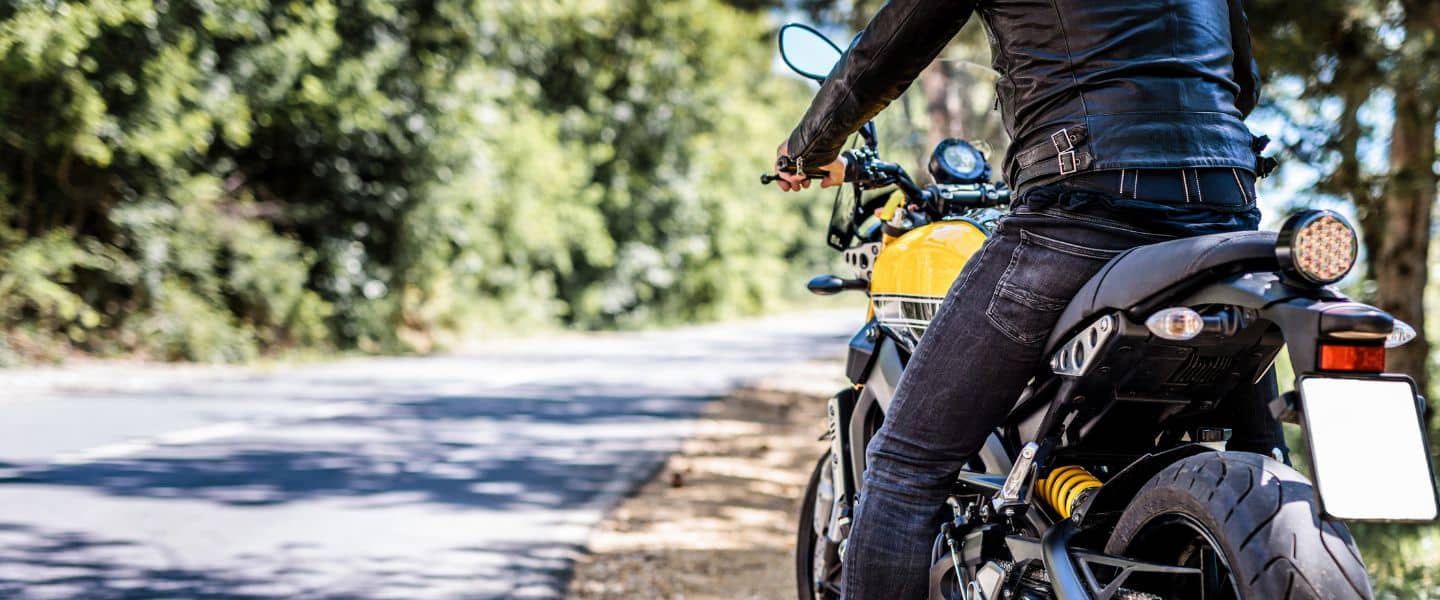
Request Free Consultation
To get answers to questions about your injury, contact Catalano Law for a FREE case evaluation. We’ll assess your case, explain your legal options, and recommend the next steps at no cost. We’re here when you need us.
Contact Form
General Contact Form

There’s nothing like the freedom of two wheels, the speed, the open air, the thrill of the ride. But that freedom comes with risks. Unlike car drivers, motorcyclists don’t have airbags or steel frames for protection. That means even a minor collision can lead to serious injury or death.
Motorcyclists face a much higher risk on the road than drivers in passenger vehicles. Data from the National Highway Traffic Safety Administration shows that motorcyclists face a fatality rate approximately 24 times higher than that of passenger vehicle occupants.
At Catalano Law, our Syracuse motorcycle accident lawyers have seen firsthand how quickly a routine ride can turn tragic when drivers aren’t paying attention.
That’s why defensive riding isn’t just a skill; it’s a lifeline. Whether you’re weaving through downtown Syracuse traffic or coasting along the backroads near Onondaga Lake, staying alert and prepared could save your life.
Essential Defensive Riding Principles
Defensive riding means staying alert, expecting the unexpected, and creating space to maneuver out of dangerous situations. Here are the core techniques every motorcyclist should master:
Proper Lane Positioning
Your lane position affects visibility and space. Own your lane. Stick to the left or right third, not the center, to stay visible.
Avoid Blind Spots
If you can’t see a driver’s eyes in their mirror, they can’t see you. Spend as little time as possible in drivers’ blind spots, especially when passing or riding next to larger vehicles.
Maintain Escape Routes
Always ride with an escape plan. Whether it’s the shoulder, an open lane, or a quick exit, you should always know where you’d go if you need to dodge a sudden obstacle.
Follow a 360-Degree Scan Pattern
Continuously scan the road ahead, behind, and to both sides. Check your mirrors regularly and look several seconds ahead to anticipate changes in traffic flow.
Keep a Safe Following Distance
Unlike cars, motorcycles don’t stop as quickly on poor surfaces. Follow the “4-second rule” behind vehicles and increase that gap in bad weather or low visibility.
Anticipate These Dangerous Driver Behaviors
A few seconds of extra awareness can mean the difference between swerving around danger and not walking away at all. By predicting risky moves, you can respond faster to:
Sudden Lane Changes
Drivers may drift or change lanes without signaling. Look for signs: a car moving toward the line, tires turning, or a driver checking mirrors. Slow down or position yourself to avoid getting sideswiped.
Left-Turn Hazards at Intersections
One of the most common causes of motorcycle crashes is a car turning left in front of a rider. Approach intersections cautiously and reduce your speed if a vehicle is waiting to turn.
Rear-End Collisions
Motorcycles can stop faster than cars, but cars behind may not react quickly. Flash your brake light early and gradually when slowing down. Stay in gear at stops in case you need to escape a rear impact.
Merging Without Looking
Drivers may merge into your lane on ramps or in heavy traffic without seeing you. Watch their wheels, mirrors, and body language, and be prepared to brake or change lanes if necessary.
Adapting Defensive Techniques to Your Riding Environment
Different road types and conditions call for different strategies:
City Streets (e.g., Downtown Syracuse)
- Watch for pedestrians and cyclists, as well as sudden stops.
- Keep your eyes moving and ride at speeds that allow time to react.
- Be especially alert near parked cars, doors can swing open without warning.
- Maintain greater following distances and avoid riding between large trucks.
- Keep scanning mirrors and anticipate congestion or sudden slowdowns.
- Use your signals early and make lane changes deliberate and predictable.
- Watch for wildlife, loose gravel, or uneven pavement.
- Use extra caution around curves and hills where visibility is limited.
- Be prepared for slower-moving vehicles and limited shoulder space.
- Use reflective gear and make sure your lights are bright and functional.
- Increase following distance and reduce speed to match visibility.
- Avoid riding if your helmet visor is scratched or foggy.
Adverse Weather (Rain, Fog, or Snow)
- Avoid sudden movements; smooth braking and acceleration are essential for your safety.
- Ride in the car tire tracks for better traction.
- Reduce your speed and be extra cautious at intersections.
Learn From the Pros: Defensive Riding Courses
Even experienced riders can benefit from professional training. The New York State Motorcycle Safety Program (NYSMSP) offers Basic and Advanced Rider Courses that teach defensive strategies and improve decision-making. Completing one can even lower your insurance rates and improve your riding confidence.
Hurt in a Crash? Call Our Syracuse Motorcycle Accident Lawyers
Defensive riding goes a long way, but can’t prevent every crash. If a negligent driver caused your motorcycle accident, you deserve support. At Catalano Law, our Syracuse motorcycle accident lawyers will help you pursue the compensation you need for medical bills, lost wages, and pain and suffering.
Call us today for a free consultation and find out how we can help you get back on the road.

